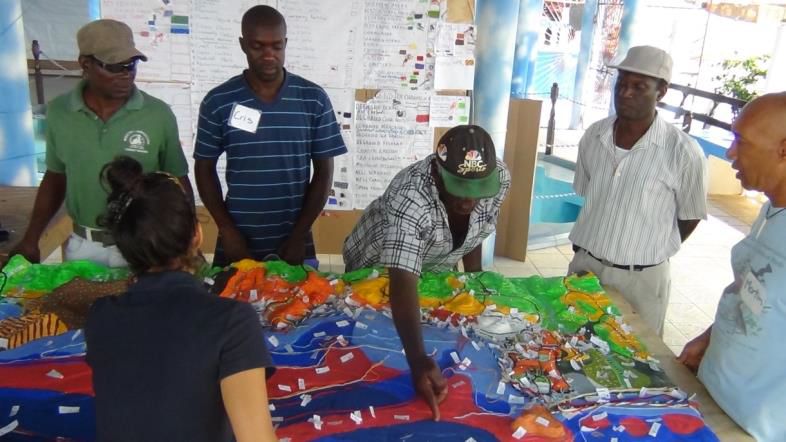Integrated vulnerability assessment (VA)
We developed a spatially explicit vulnerability analysis that included both national and local indicators. These indicators were designed to capture the social, economic and ecological vulnerabilities and the interplay between them. The framework used to organize the indicators captured exposure, adaptive capacity, and sensitivity of three key social components (critical infrastructure and facilities; livelihoods -i.e. natural resource dependence and critical industry facilities such as fish processing plants and hotels- and social sensitivity -number of people and houses) as well of critical coastal habitats (mangroves, seagrass and reefs) providing risk reduction services (e.g. coastal protection and provisioning). Layering the ecological vulnerability assessment with the socioeconomic vulnerability assessment highlighted areas of overlap where adaptation and disaster risk reduction interventions were most needed, and where nature could play a role in reducing climate and disaster risk. The national level assessment framework was then adapted for site scale application to produce a community vulnerability assessment.
• Community understanding the importance and the benefits of a successful implementation.
• Community acceptance, participation and ownership.
• Government involvement and participation.
• Partnerships with the Grenada Red Cross and NGO Grenada Fund for Conservation (mobilizing communities, empowering stakeholders, ensuring the development of an action plan for climate adaptation).
• Access to information on socio-economic and ecological characteristics.
• The critical role that partnerships and community engagement play during all stages of the Project.
• The importance of engaging relevant government agencies and others early on to ensure: a) that the analysis is grounded in local context and needs; b) that information and data collected are accurate and current and can be effectively utilized by government agencies.
